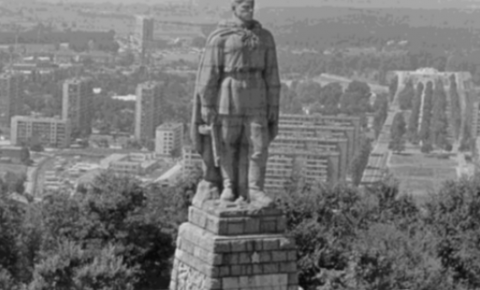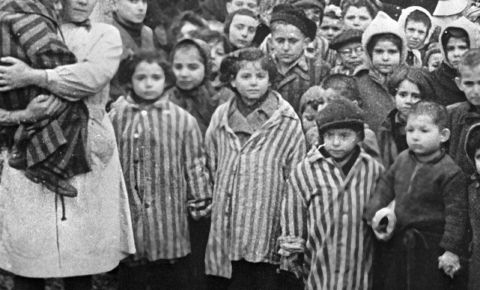A ‘Deathtrap’ or ‘Ahead of its time’? US mag National Interest attacks Soviet WW2-era KV heavy tank
Mikhail Khodarenok is a military commentator for RT.com. He is a retired colonel. He served as an officer at the main operational directorate of the General Staff of the Russian Armed Forces.
A hit piece in The National Interest accuses the WW2-era KV series Soviet heavy tanks of failing to stop the 1941 Nazi invasion. But apart from factual flaws, the article fails to take a broader look at the tank’s role in history.
The National Interest didn’t spare colorful words painting a grim picture of the KV heavy tank. With the title “This Tank Was Huge (Disaster),” the article says it “couldn’t finish the job” of stopping the Nazi army.
It’s a naïve notion that the KV heavy tanks alone could have stopped the Wehrmacht in 1941. You can only stop an invasion of that scale with the coordinated efforts of all military branches. The army and navy must be equipped with the most advanced weapons, the troops should be well trained and organized. Saying that some particular weapon or piece of hardware can play a decisive role is a gross exaggeration.
But the KV did perform its role well and served as a stepping stone to what’s now known as the “victory tank.”
Nigh-impregnable armor
The authors quote military historian Michael Jones, who writes in his book, Leningrad: State of Siege, “The Germans herded the Russian giants towards their own heavy artillery, whose barrels were brought down to the horizontal to fire point-blank at the advancing behemoths.”
That’s because the only weapons that could destroy the KV-1 were the 105-mm leFH 18 howitzers and 88 mm Flak 18/36/37 artillery guns. All other weapons at the Wehrmacht’s disposal were basically useless against it.
The Soviet heavy tank could withstand the 37- and 50-mm ammunition of German PAK 35/36 and Pak 38 anti-tank guns. Czech 47 mm KPÚV vz. 36 guns, which the German Army had in abundance after occupying Czechoslovakia, were also useless against the KV-1.
Most of the German tanks were also powerless against the KV-1 in the beginning of the war. The 37 mm guns of the Pz.Kpfw.38 (t) and Pz.Kpfw. III (up to the Ausf. E modification) tanks, as well as short-barreled 75 mm guns of the Pz.Kpfw. IV tanks couldn’t compromise the KV-1 armor from any angle.

Kv-1 tank © Getty Images / Sovfoto/ Universal Images Group
Undeniable flaws
According to The National Interest magazine, “one of the tank’s biggest problems was the fact the crew could barely see out of [the] damn thing.” Stephen Sewell wrote in a history of Soviet heavy tanks for Armor magazine, “Once the war broke out, the KV-1 was soon revealed to be a deathtrap.”
Limited observability in the KV-1, however, was no news to anyone at the time. Back in 1940, Soviet experts did point out this particular drawback in their reports; however, that neither was the KV-1’s biggest problem, nor was the tank itself ever a “deathtrap.”
The largest number of complaints and demands for replacement received by the KV manufacturer concerned the tank’s transmission. Indeed, it left much to be desired. It was so bad that up to 20 or even 30 percent of the new tanks arrived to the frontlines unfit to drive. Another serious drawback was the tank’s weak air cleaner.
Russian experts on combat vehicles agree that there was a lot of controversy around the KV-1. As unexpected as it may sound, it simply arrived ahead of its time. Back in 1941, it was the most powerful tank, with no rivals, though it was finally matched and outperformed by the German Tiger series at the end of 1942. The Tiger was unbeatable with its 88 mm KwK 36 and easily took out the KVs before they could even get the enemy within their firing range.
A step to victory
As for the dramatic losses of the KV tanks in the early months of the war, that was rather due to the flaws in the crew training than to the tank’s capacities. Most crews were not ready to operate it well, but whenever a crew developed enough skills, the results were very impressive. The KVs performed great in combat, in ambush operations and counterattacks.
For example, a KV-1 under the command of Senior Lieutenant Zinovy Kolobanov took out 22 enemy tanks in just one day on August 20, 1941, near Krasnogvardeysk (today Gatchina). A KV-1 commanded by Lieutenant Semyon Konovalov destroyed 16 enemy tanks in one day. Another KV-1, commanded by Senior Lieutenant Ivan Korolkov, defeated 34 enemy tanks in a series of operations between June 10 and September 20, 1942. And these are just a few examples.
No doubt, the KV-1 wasn’t flawless. But what matters is that the design had a potential which allowed for the development of the IS tanks, successors to the KV series, in early course. Notably, among them was the famous IS-2 tank dubbed the “victory tank.”
The National Interest admits that the IS-1, the first of the IS series, “proved to be among the war’s most successful heavy tanks” and “led the Soviet charge into Berlin”.
However, here, The National Interest is mistaken again: the IS-1 model was discontinued in January 1944. The total number of the IS-1 tanks ever manufactured did not exceed 100, and most of them were destroyed in combat long before the Berlin offensive. The charge into Berlin was led by the IS-2, the most powerful tank in history of the Second World War. A total of 3,750 IS-2 tanks were sent into combat, starting in early 1944.

IS-2 heavy tank © Sputnik / Boris Kudoyarov
Weak competition
Since The National Interest has deemed it possible to publish a scathing yet inaccurate piece about the Soviet KV tank, let’s have a review of the United States’ own stable of heavy tanks at the time.
Between 1941 and 1944, the United States did not have any heavy tanks at all, and that basically sums it all up. What they had was the M3 Lee medium tank and its updated model M3 Grant. The M3 had an archaic design and was way too tall against all other tanks at the time. It was powered by a radial aircraft engine that was extremely sensitive to heat and therefore quite dangerous. The machine was unwieldy, had poor off-road performance and weak armor. Among the Soviet troops, the M3 Lees were referred to as the “deathtrap for seven” (as the tanks were designed for a crew of seven).
The M26 Pershing, known as a heavy/medium tank, could be, with some reservations, counted as the US Army’s heavy tank in the Second World War. It was used in the last months of the war during the invasion of Germany.

That said, the fact still remains that the United States just failed to produce a viable and efficient heavy tank during that global conflict. Also, if we compare the Soviet IS-2 model and the American M26, it will become obvious what the American designers were looking up to when working on it.
The M26 Pershing had quite a lot of flaws. The most ridiculous of them was the unbalanced design. The weight of the tank’s large cannons had to be stabilized and to do just that, a large counterweight (weighing 1.5 tons!) was added to the rear of the turret bustle. Unbelievable but true, the M26 Pershings were made to carry around 1.5 tons of useless steel instead of a more valuable payload, such as ammo or fuel, that they could have been carrying instead.
And at the same time, the Soviet Union was already producing its heavy tank IS-3, which was superior to the M26 in every respect.
With such history, it seems inappropriate for a US media outlet to be so freely using such terms as a “disaster,” “beast,” “unwieldy,” “deathtrap” and so on, when talking about the Soviet heavy tanks used in the Second World War. It is possible that some vested interests are backing such publications and we may expect to see more of the fierce yet superficial attempts to discredit the Soviet Army and its military hardware in the near future.
Source В Каунасе прошли памятные мероприятия в день освобождения города от немецко-фашистских захватчиков
В Каунасе прошли памятные мероприятия в день освобождения города от немецко-фашистских захватчиков
1 августа 2021 года в день 77-й годовщины освобождения города Каунаса (Литва) от немецко-фашистских захватчиков советник-посланник Сергей Рябоконь и военный атташе при Посольстве России в Литве Олег Давлетзянов совместн...
01 Aug 2021





